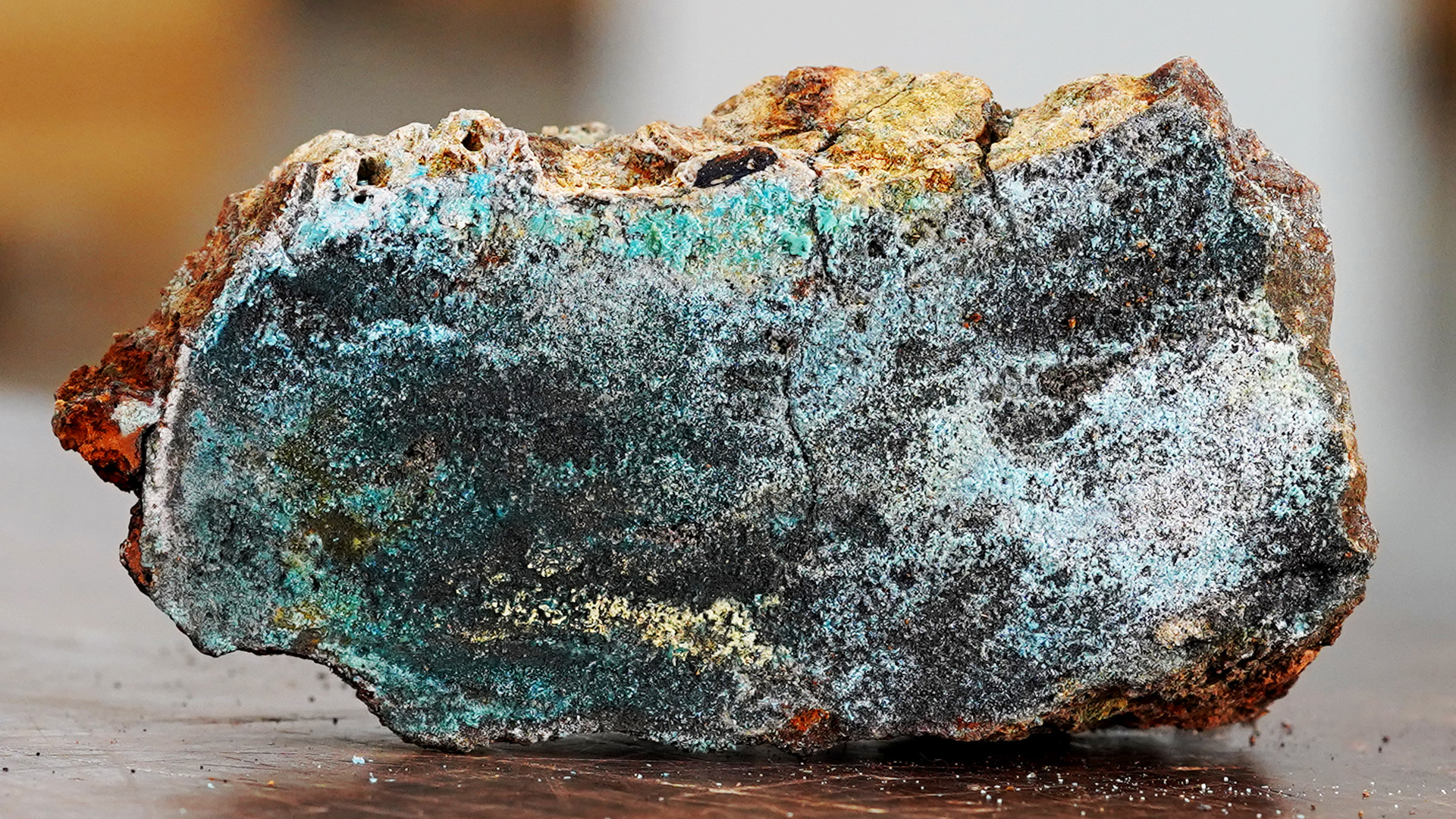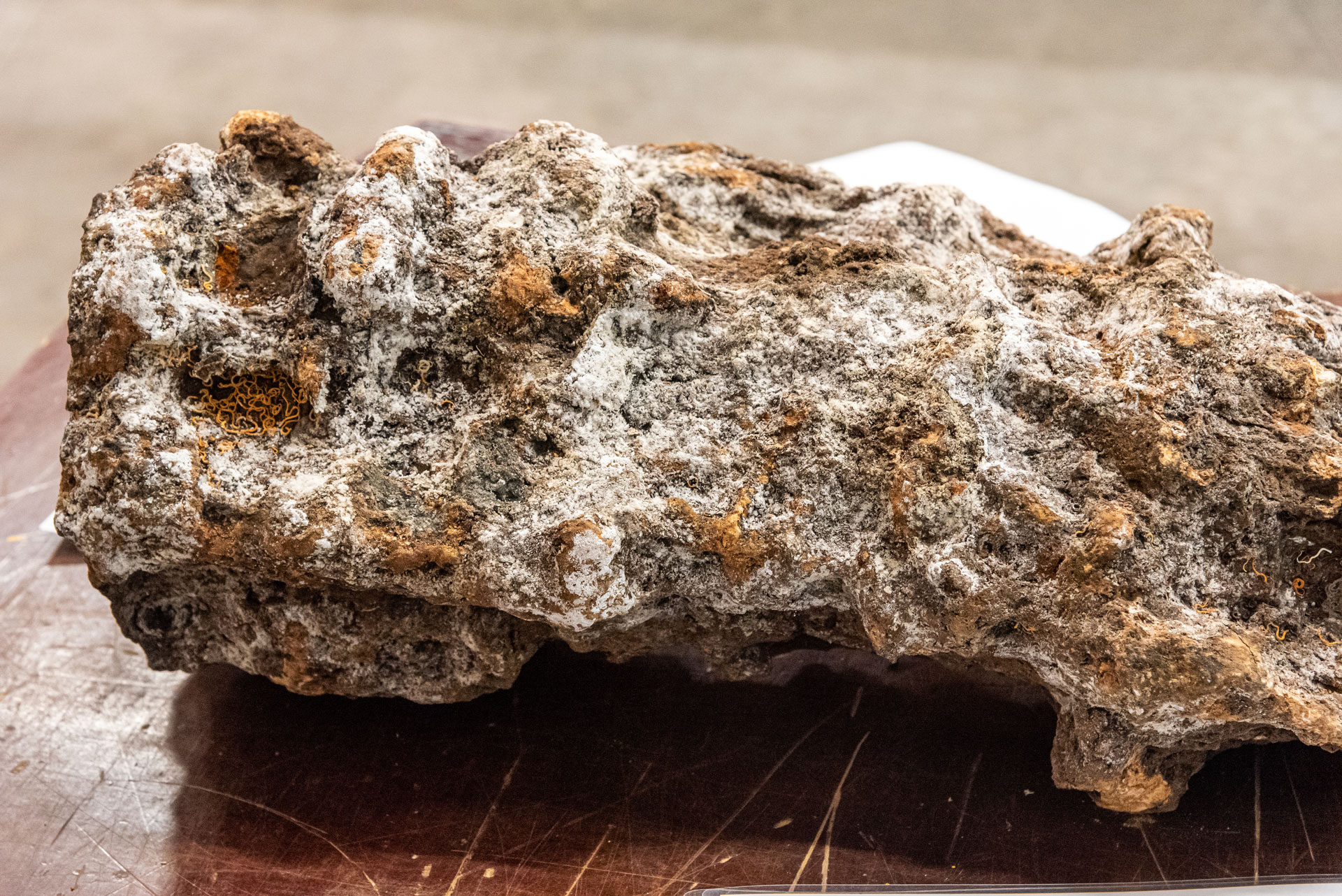The minerals we need

A section of a sulphide sample, obtained during The Norwegian Petroleum Directorate's (now: the Norwegian Offshore Directorate) expedition to the Mohns Ridge in the Norwegian Sea in 2020. Photo: Øystein Leiknes Nag, Norwegian Offshore Directorate.
1/26/2024 Change is often difficult. This will also be true for the transition from fossil energy systems to renewables.
About 80 per cent of the energy the world uses comes from fossil sources. If the energy transition is going to turn this around, and if the world's population is to get its energy from wind turbines, solar cells, batteries and transmission lines, among other things, this will hinge on large volumes of minerals and metals.
The need for minerals will far surpass what the world currently produces, and will far outstrip what we can recycle.
Rapidly rising needs
According to the International Energy Agency's (IEA's) estimates, the need for critical minerals will grow sevenfold by 2050. The rising need for these resources, these raw materials, is now receiving increasing international attention. The EU's "Critical Raw Material Act" and American initiatives are clear in stating that there is a need for greater variation and more security linked to procuring these raw materials.
The IEA projects that 98 per cent of rare-earth elements and 93 per cent of magnesium supplies for the EU are currently imported from China. The Democratic Republic of the Congo (DRC) is another country the world depends on for access to critical and rare-earth minerals. According to the same report from the IEA, the extraction that takes place in these countries has a litany of negative consequences for the climate, nature, the environment and human beings.
Norwegian contribution
Norway can contribute raw materials for the energy transition from minerals on the shelf. The Norwegian Offshore Directorate's surveys indicate that there could be substantial volumes of minerals in our waters. There is still a lot we don't know. Now that the Storting (parliament) has decided to allow exploration for these resources, the Norwegian Offshore Directorate is convinced that more knowledge will benefit everyone, and this will give researchers, public administration, the industry and politicians the best possible basis for considering potential further development of minerals from our shelf.
Knowledge and technology
Minerals on the seabed represent a potential new industry in Norway. Much of the knowledge we have acquired in the oil and gas industry can be utilised and refined. Norway is a member of the International Seabed Authority (ISA), which governs organised exploration for seabed minerals in international waters. So far, there are 31 exploration licences in international ocean areas, and the ISA is in the process of preparing rules and regulations for extraction. Several tests of technical extraction equipment have been carried out over the last five years.
The Norwegian Offshore Directorate's and Norwegian university communities' surveys and mapping of the geology on the seabed have used technology developed by the oil and gas industry. Our experience with exploration, development and operation of oil and gas fields is crucial for potential further development of technology related to minerals on the seabed.
Gravel piles and football pitches

Sulphide sample, part of a chimney, acquired by the Norwegian Petroleum Directorate ( now: the Norwegian Offshore Directorate) at the Mohns Ridge in 2020.
Some of the mineral deposits on the seabed that we can extract and utilise are what we call fossil or "extinct" deposits, and most often, they look like piles of gravel. The active structures could be subject to protection. Exploration for minerals on the seabed is not considered to have a significant impact on the environment. Exploration for minerals on the seabed involves carrying out the same types of surveys as when we're mapping the environment.
In the event of potential mineral extraction from the seabed, an extraction area might be no larger than a few football pitches. And each such extraction area will often be 100 kilometres or more apart. Should any acreage be awarded for extraction of minerals, each and every potential licence will be required to conduct a detailed and project-specific impact assessment.
Strict requirements and an incremental approach
There have been a great number of opinions expressed, and some strongly worded, about minerals from the seabed, and many specifically point out that we don't know enough. This is also precisely why our elected officials have decided that we need to know enough about both the immediate and long-term consequences of this activity before it would be prudent to initiate commercial extraction.
Norway is a maritime and coastal nation with fantastic natural resources. We have a long tradition of managing the ocean environment and resources in the best interests of the broader society. Our more than 50-year track record of developing Norwegian oil and gas activities has taken place incrementally and based on knowledge. We intend to use the same template for seabed minerals.
Future value creation depends on a good environmental status and rich natural diversity in our coastal and maritime areas. We need to make sure that resources from our vast continental shelf – and from the ocean - are used sustainably. The plans currently in place for mineral activities will ensure that this is the case.
Read more about seabed minerals
This opinion piece was written by Kjersti Dahle, Director technology, analysis and coexistence. It was published on the altinget.no website on 26 January.
Director Communication, public affairs and emergency response
Updated: 1/26/2024